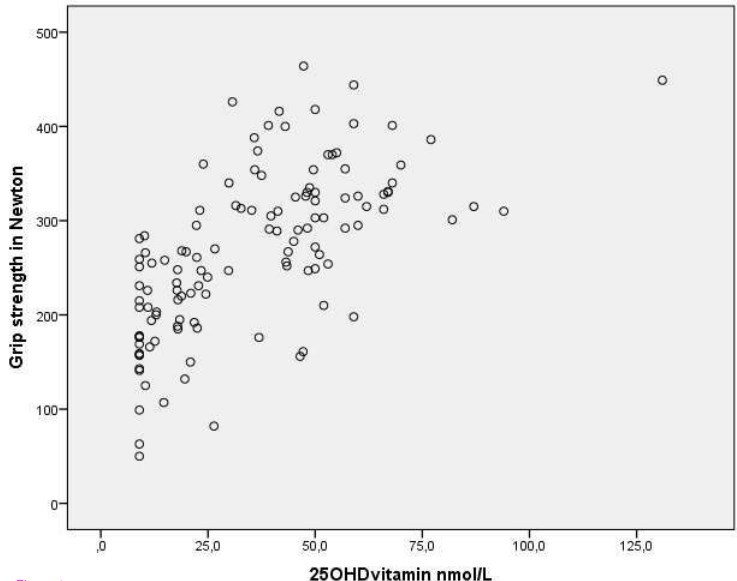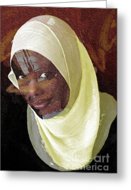Veiled Somali pregnant women in Sweden had low vitamin D and were weak
Physical performance and 25-hydroxyvitamin D: a cross-sectional study of pregnant Swedish and Somali immigrant women and new mothers.
BMC Pregnancy Childbirth. 2013 Dec 17;13(1):237.
Kalliokoski P, Bergqvist Y, Löfvander M.
BACKGROUND: Severe vitamin D deficiency can impair muscle strength. The study aims were to examine physical performance in the hands and upper legs, and analyze plasma 25-hydroxyvitamin D (25(OH)D) concentrations in women with presumably low (veiled, Somali-born) and high levels (unveiled, Swedish-born).
METHODS: Women (n=123, 58% Swedish) enrolled at a Swedish antenatal clinic, latitude 60 [degree sign] N, were recruited. Plasma 25(OH) D was analyzed, measured as nmol/L, then categorized as <10 = undetectable, 10-24, 25-49, 50-74 or >75. Muscle strength was tested: maximal hand grip strength (in Newtons, N), and upper leg performance (categorized as able/unable to perform squatting, standing on one leg, standing from a chair, and lifting their hips). Social and anthropometric data were collected. Non-parametric statistics tested the data for differences in their ability to perform the tests across 25(OH)D categories. Undetectable values (<10 nmol/L) were replaced with '9' in the linear correlation statistics. A final main effect model for grip strength (in N) was calculated using stepwise linear regression for independent variables: country of birth, 25(OH)D levels, age, height, weight, physical activity, lactation status, parity, and gestational age.
RESULTS:
Somali participants
(35%) had 25(OH)D levels of <10 nmol/L, and
90% had <25 nmol/L;
10% of Swedish participants had <25 nmol/L of 25(OH)D, and
54% had <50 nmol/L.
Somali women had a relatively weak grip strength compared with Swedish women: median
202 N (inter-quartile range 167-246) vs. median
316 N (inter-quartile range 278-359), respectively.
Somali women were also weak in upper leg performance:
73% were unable to squat,
29% unable to stand on one leg, and
21% could not lift their hips (not significant across 25(OH)D categories);
most Swedish women could perform these tests.
In the final model, grip strength (N) was significantly associated with 25(OH)D levels (B 0.94, p=0.013) together with Somali birth (B -63.9, p<0.001), age (B 2.5, p=0.02) and height (B 1.7, p=0.01)
CONCLUSIONS: Many Somali women had undetectable/severely low 25(OH)D concentrations and pronounced hand and upper leg weakness; grip strength was strongly associated with 25(OH)D. Maternity health care personnel should be aware of this increased frequency and manage care accordingly.
PMID: 24345271

The higher the vitamin D, the stronger the grip




PDF is attached at the bottom of this page
See also Vitamin D Life
Search Vitamin D Life for "Grip Strength" 57 items Dec 2013
Search Vitamin D Life for "muscle strength" 410 items Dec 2013
Vitamin D improves muscle strength if deficient – meta-analysis - Oct 2010
Higher vitamin D during pregnancy associated with stronger hand grip at age 4 – Oct 2013
Muscle strength not increased by raising vitamin D to only 30 ng – RCT Aug 2012
More than 40 ng vitamin D for Athletes – July 2010 nice tables
Hypothesis: Why so many females in the Middle East are now Vitamin D Deficient
More hijab clothing may have resulted in 6X increase in Multiple Sclerosis in Tehran – May 2013
Dark skinned pregnant women far from equator were very vitamin D deficient – Sept 2012
Concealing clothing resulted in only 8 ng vitamin D – Feb 2011 France
Concealing Clothing in Canada: half the level of vitamin D in blood – May 2012
The following is from Hypothesis: Why so many females in the Middle East are now Vitamin D Deficient
{include}
